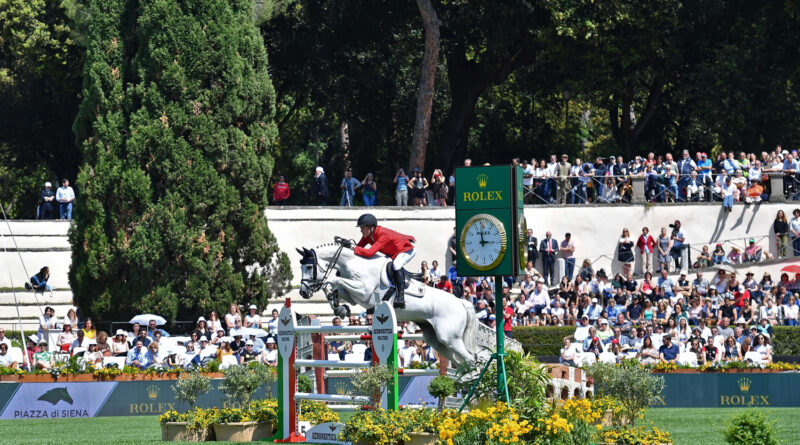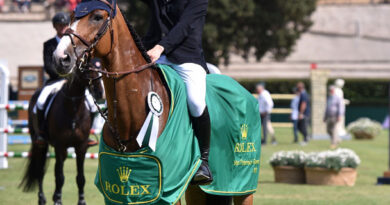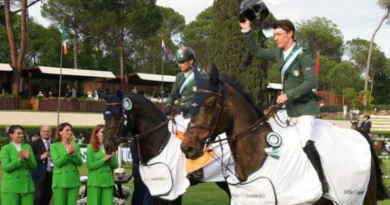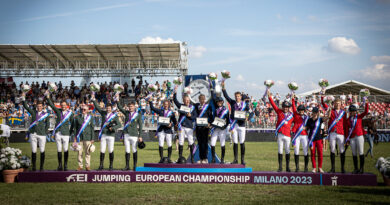CSIO 2021: The Long-Awaited Comeback of the Historic Show Jumping in Piazza di Siena
The CSIO 2021 come backs in Piazza di Siena, Rome, from 26 to 30 May for an exciting 88th edition, after the forced stop due to the pandemic.
FIRST CONFIRMATIONS FOR THE JUMPING NATIONS CUP
Although entries have not yet closed, have already confirmed: Sweden, the latest winner of the Nations Cup in 2019, and Japan, who return to Piazza di Siena after 21 years.
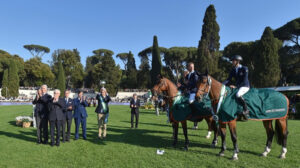
A TEST BENCH FOR THE ITALIAN TEAM
For Italian riders, the Roman competition has always been an important and prestigious appointment, as well as the first real test of the season.

ATTENTION TO NATURE
This year the CSIO 2021 is under the banner of environmental sustainability, thanks to the project to safeguard the Valle dei Platani inside Villa Borghese, where the horse competition is based. The project is managed by the Organising Committee of the Concorso Ippico Internazionale di Piazza di Siena (Federazione Italiana Sport Equestri – FEI, Sport e Salute & CONI), under the supervision of the Department of Environmental Protection of Roma Capitale.
The recovery project concerns eleven planes of the 17th century, which was strongly supported by the Associazione Amici di Villa Borghese (Friends of Villa Borghese Association), has attracted the interest of park-goers because of its spectacular technique. French botanist Pascal Genoyer (Montpellier University of Sciences), an expert in architecture and tree growth, specialised in the regeneration of plane trees, directed the work of a team of Italian tree climbers from Dendrotec, led by Renato Comin, one of the fathers of Italian arboriculture.
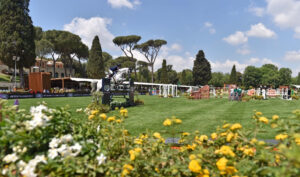
THE VALLEY OF THE PLANE TREES
At the beginning of the 17th century, the Valle dei Platani was part of the villa created by Cardinal Scipione Borghese outside Porta Pinciana. The Valley was included in the so-called Barco, an area designated for hunting, characterised by valleys, hills, plains, woods, and gardens. A plan dated between 1618 and 1620 documents the existence in the area of a rustic fishpond, enlarged after a few years and embellished by the creation of two small islands connected to the shore by small bridges. Around the pond, 44 plane trees (Platanus Orientalis L.) were planted, eleven of which still attract attention today due to their grandeur and beauty. Following the works commissioned by Marcantonio IV Borghese at the end of the 18th century to the architects Antonio and Mario Asprucci, the old ‘Barco’ was no longer used for hunting. The creation of a new pond in what is now the Giardino del Lago led to the drying up of the ancient fishpond, all traces of which disappeared in the 1880s.
According to scientist Peter Raven, one of the greatest living botanists:
The Valle dei Platani is the only known urban island of ancient Oriental plane trees in the West […] The eleven survivors of the original plantation are precious living relics, irreplaceable masterpieces as incomparable as Donatello’s David”.
The preservation and care project that is now beginning is unprecedented, both because of the characteristics of the site, which make it a unique place in the West, and because there are no references of similar interventions on specimens of this kind and as old.
Nature, love of horses, and emotions are the winning formula for the CSIO 2021. See you at the end of May at Piazza di Siena!
By Denisa Kucik
Feature Image: Ph. Simone Ferraro – CONI, courtesy of Equi Equipe

